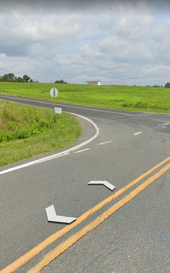MikeGoodman59
My bug out location north of Greensboro
FLA vs LFP thought.
Have Interstate 2X strings 420AH batteries, 48V in parallel through SMA SI5048. Again: 2x8 (6V) twice.
My first set of Trojans lasted 10 years. On my second set of batteries. Replaced 2 years ago, $6,400, cycling more frequently this time.
Mine is grid tie, battery backup. Discharge and check specific gravities about every quarter. Typically go down to 40% SOC, 60% DOD. ... Can hold essential loads @120V 4 days spring/fall, 2 days in winter, 3 days summer (zero AC). ... No concern keeping heat down to 62F in winter to reduce air handler load.
48 VOLTS, 840 AMP HOURS.
40,320 WH ... At typical 50% DOD, would have to compare to 20,160 WH LiFePo4. (Hoping the math is right). That means I would need 4X 48V 100AH LFP batteries. (4.2?)
$6,400 2 YEARS AGO on the 16 FLAs.
$1500x4 SigSol for LiFePo4 (12/23)
Does that make it a wash?
Granted they're different animals.
Granted I still currently maintain Sp. Gr.
The above is in my primary residence, can maintain daily. As compared to my off-grid cabin, 1 hr north. Any possible concerns have to do with how often I could visit, how well they would maintain without frequent oversight.
Would require weekly visits? Central North Carolina down to min possible ~15F outside?
Is lithium iron phosphate simply a brain dead choice any more?
Use lithium iron phosphate with heaters?
As an aside, should I cycle my FLA more frequently? Deeper?
Have Interstate 2X strings 420AH batteries, 48V in parallel through SMA SI5048. Again: 2x8 (6V) twice.
My first set of Trojans lasted 10 years. On my second set of batteries. Replaced 2 years ago, $6,400, cycling more frequently this time.
Mine is grid tie, battery backup. Discharge and check specific gravities about every quarter. Typically go down to 40% SOC, 60% DOD. ... Can hold essential loads @120V 4 days spring/fall, 2 days in winter, 3 days summer (zero AC). ... No concern keeping heat down to 62F in winter to reduce air handler load.
48 VOLTS, 840 AMP HOURS.
40,320 WH ... At typical 50% DOD, would have to compare to 20,160 WH LiFePo4. (Hoping the math is right). That means I would need 4X 48V 100AH LFP batteries. (4.2?)
$6,400 2 YEARS AGO on the 16 FLAs.
$1500x4 SigSol for LiFePo4 (12/23)
Does that make it a wash?
Granted they're different animals.
Granted I still currently maintain Sp. Gr.
The above is in my primary residence, can maintain daily. As compared to my off-grid cabin, 1 hr north. Any possible concerns have to do with how often I could visit, how well they would maintain without frequent oversight.
Would require weekly visits? Central North Carolina down to min possible ~15F outside?
Is lithium iron phosphate simply a brain dead choice any more?
Use lithium iron phosphate with heaters?
As an aside, should I cycle my FLA more frequently? Deeper?
Last edited:




